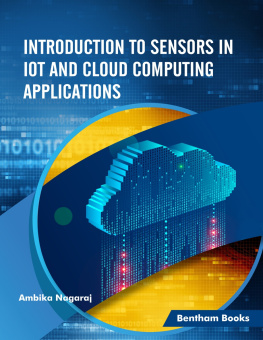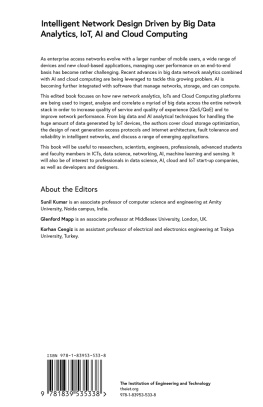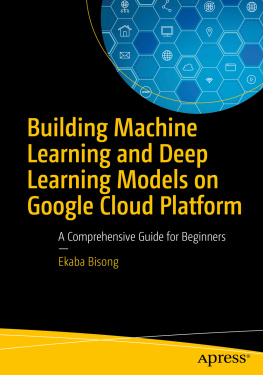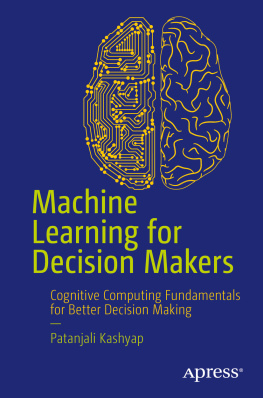Contents
Guide
Pagebreaks of the print version
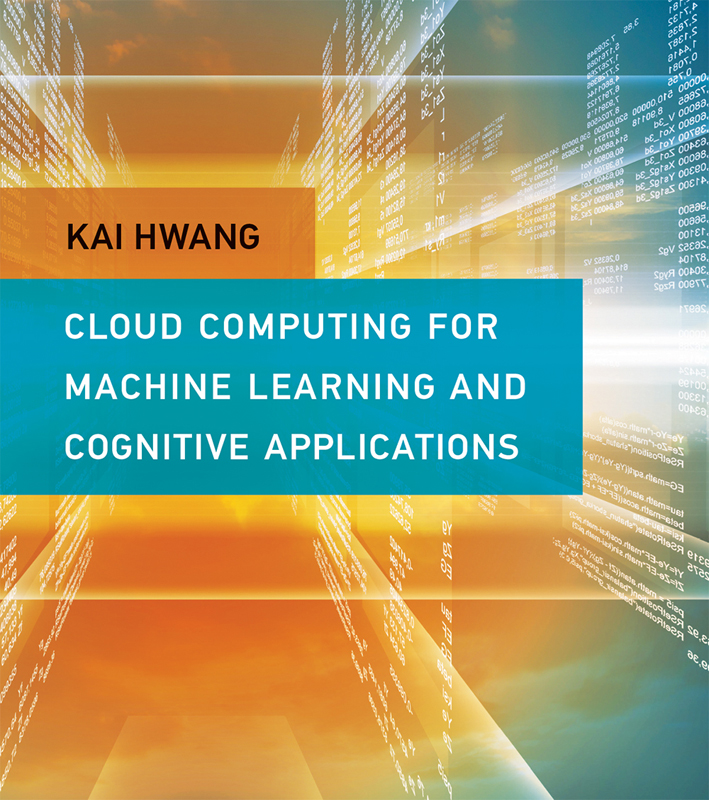
Cloud Computing for Machine Learning and Cognitive Applications
Kai Hwang
The MIT Press
Cambridge, Massachusetts
London, England
2017 Massachusetts Institute of Technology
All rights reserved. No part of this book may be reproduced in any form by any electronic or mechanical means (including photocopying, recording, or information storage and retrieval) without permission in writing from the publisher.
This book was set in Syntax LT Std and Times LT Std by Westchester Publishing Services. Printed and bound in the United States of America.
Library of Congress Cataloging-in-Publication Data
Names: Hwang, Kai.
Title: Cloud computing for machine learning and cognitive applications / Kai Hwang.
Description: Cambridge, MA : The MIT Press, [2017] | Includes bibliographical references and index.
Identifiers: LCCN 2016057874 | ISBN 9780262036412 (hardcover : alk. paper)
Subjects: LCSH: Cloud computing. | Machine learning. | Data mining. | Big data.
Classification: LCC QA76.585 .H95 2017 | DDC 004.67/82dc23
LC record available at https://lccn.loc.gov/2016057874
Contents
- List of Tables
- Cloud-enabling technologies in hardware, software, and networking.
- Comparing three cloud service models with the on-premise computing in terms of resources management responsibilities.
- Classification of parallel and distributed computing systems.
- Cloud perspectives from providers, vendors, and users.
- Cloud application trends beyond web services and Internet computing.
- Top 10 strategic technology trends for cloud computing in 2015.
- SMACT technologies characterized by basic theories, typical hardware, software tooling, networking, and service providers needed.
- Five attributes (5 Vs) that characterize the modern world of big data.
- Evolution of the big data industry in three development stages.
- Software libraries for cloud and cognitive computing over big data sets.
- Application categories of big data: From TBs to PBs (NIST, 2013).
- IoT value chain among major players and estimated value share.
- Use of IoT devices and platforms for smart city/community development
- Global information storage capacity in terms of total bytes in 2007.
- Some big data acquisition sources and major preprocessing operations.
- Attributes for data quality control, representation, and database operations.
- Some big data analysis methods and practice tools.
- Neuromorphic processors and neural processing units developed up to 2016
- Relative merits of virtualization at five abstraction levels
- Relative merits of virtualization at various levels
- Resources virtualization and representative software products
- Hypervisors or VM monitors for generating VMs
- Summary of hardware virtualization (hypervisors) and hosted software for virtualization
- Summary of software toolkit for virtualization at OS-level, desktop, application, and network levels
- Virtualization support for Linux and Windows NT platforms
- Comparison between hypervisor-created VMs and Docker containers
- Virtualized resources in compute, storage, and network clouds
- Host provisioning and container scheduling tools
- Open-source software for cloud computing (except the vSphere 6)
- Five public cloud platforms and their service offerings (2016)
- Five cloud service categories and their representative providers
- Business models for SaaS applications on the clouds
- Experimental results on three research virtual clusters
- Open source virtual infrastructure managers and cloud operating systems
- Comparison of three cloud platform architectures
- Public IaaS clouds and their VM instance configurations (August 2015)
- Public clouds offering PaaS services (August 2015)
- Compute, storage, database, and networking services in AWS cloud
- Application, mobile, and analytics services in the AWS cloud
- Administration, security, enterprise, and deployment services in the AWS cloud
- Four SaaS cloud platforms and their service offerings (August 2015)
- Milestone mobile core networks for cellular telecommunication
- Wireless networking used in mobile IoT and cloud computing
- Threats and defense concerns in protecting mobile cloud computing
- Four global positioning systems in the United States, EU, Russia, and China
- Requirements of four IoT computing and communication frameworks
- Representative IoT contexts in smart city applications
- Social media corporate functions weighted by social-economic impact
- Top social networks based on global user population in 2016
- Summary of popular social networks and web services provided
- Service functionality of the Facebook platform
- Social media application programming interfaces (APIs)
- Four supervised ML algorithms for selected study
- Three unsupervised ML algorithms
- The Density of Nitric Oxide Measured in Various Observed Areas
- Credit cardholder data from a card issuing bank
- Sample data in the training data set for Example 6.4
- Pre-test attribute probability for sample data in Table 6.5
- Predicted results of four animals compared with their actual classes in Example 6.4
- Partial data set for k-means clustering in Example 6.6
- Dimensionality reduction methods for ML
- Patient data for PCA classification in Example 6.7
- Part of the application information of a smartphone user
- Physical examination data and the status of hyperlipidemia
- Abscissa and ordinate of some data points
- Cindys two-week outdoor exercise records
- Sampling data of a bank credit report on borrowers
- Experimental data of EMG and corresponding classification of actions
- Hospitals physical checkup data
- Weather conditions during two weeks of observation
- IBM Watson pushing for business cognitive services
- Intel development of an ccosystem for AI chips and systems
- Nvidia GPU chips targeting machine learning and neural computing
- An overview of Cambricon instruction set architecture
- Recent AR/VR/MR products developed by high-tech companies
- Patient examination data for those suspected to have hyperlipidemia
- Table of parameters for artificial neural network
- Static versus dynamic artificial neural networks
- Software libraries for deep learning recurrent neural networks
- Data of gas sensors and corresponding gas conditions
- Sample data of iris flowers characterized in four attributes
- Temperature, humidity, and gas concentration to measure sensor sensitivity
- Image data matrix used in Problem 7.7
- Representative software libraries for big data processing on clouds
- MapReduce and its variants in Hadoop and Twister
- Recent extensions of Hadoop programming tools
- Transformations and actions taken on the RDDs in Spark programming, where Seq(T) denotes a sequence of elements of type T (Source: Zaharia, 2016).
- Transformation operators for Spark Streaming applications
- Spark TeraSort benchmark results reported in November 5, 2014
- Feature algorithms implemented in Spark ML library
- Graph operators that transform vertex and edge collections in Graph
- Examples of operation types built into TensorFlow core


